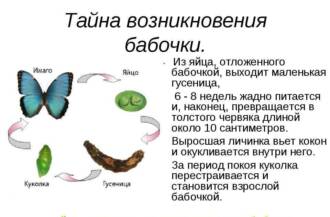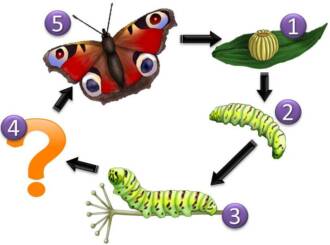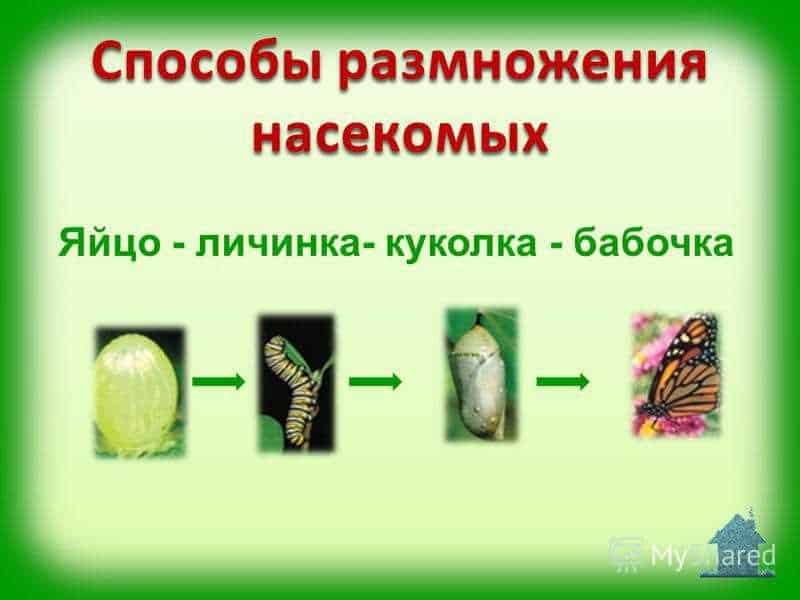
Butterfly reproduction is an amazing process that includes several stages of development. Butterfly mating is the first and most important step in the life cycle of these colorful insects. This process ensures the transfer of genetic information and allows the next generation to reproduce.
The developmental stages of a butterfly begin with an egg, which is laid by the female on the plant. The egg hatches into a caterpillar, the first life form of a butterfly. The caterpillar actively feeds on vegetation in order to gain sufficient energy for subsequent stages of development.
After the caterpillar reaches its maximum mass, it turns into a chrysalis. In this state, she stays for some time, going through complex processes of metamorphosis. Significant changes take place inside the pupa, and eventually an adult butterfly emerges from it.
The birth of a butterfly is the final stage of the development cycle. The newly appeared butterfly emerges from the chrysalis, spreads its wings and is ready for independent life. She begins looking for a mating partner to continue the breeding cycle.
Thus, the process of reproduction of butterflies includes several amazing stages of development, as a result of which a beautiful and delicate insect is born. The life cycle of a butterfly is an amazing natural phenomenon that delights and inspires many people.
The appearance of butterflies and its role in the process of reproduction
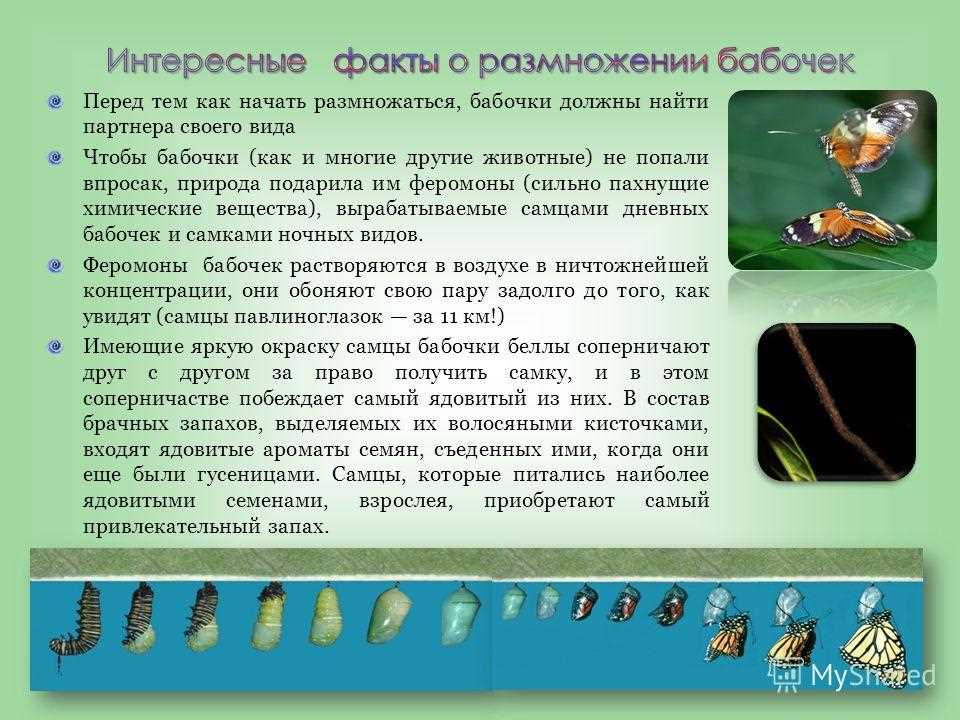
Butterflies are amazing creatures that go through several stages of development. They begin their life as eggs, then turn into caterpillars, then into pupae, and finally adult butterflies are born. The life cycle of a butterfly from egg to adult is called the butterfly cycle.
One of the most exciting moments in the life cycle of a butterfly is the process of reproduction. How do butterflies reproduce? Adult butterflies mate to produce offspring. Butterfly mating occurs during flight, when the males chase the females. The female chooses the male with the most attractive appearance and the signals he emits.
The appearance of butterflies plays an important role in the breeding process. Male butterflies usually have brighter colors, wing ornaments, and more expressive antennae. These signs serve as signals for females, indicating the strength and health of the male. Females choose males with the most attractive external features, which increases the chances of survival and transmission of their genetic characteristics to offspring.
Differences between male and female butterflies
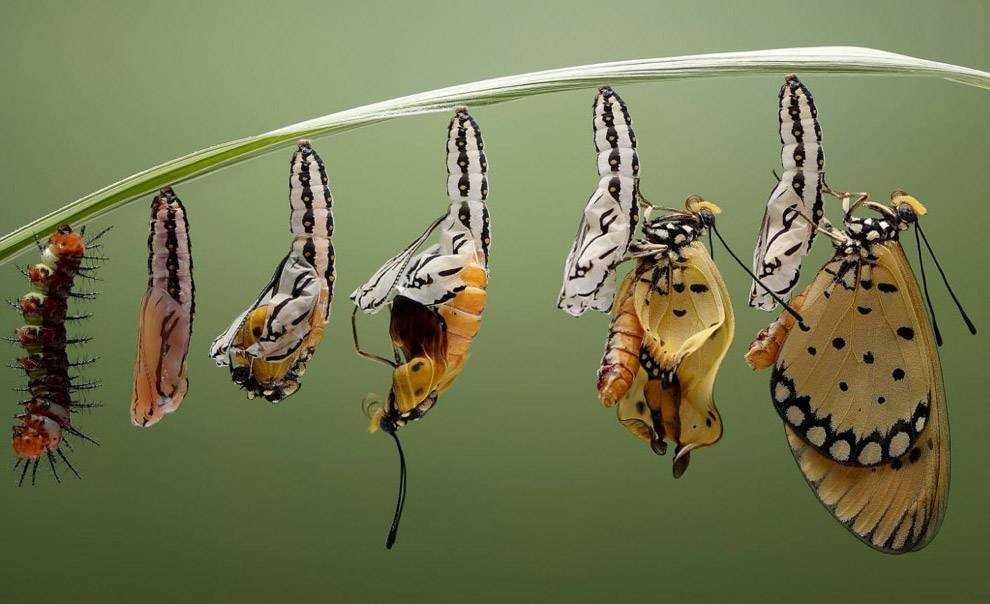
The birth of a butterfly occurs after going through developmental stages known as the butterfly life cycle. This cycle includes four stages: egg, caterpillar, chrysalis and adult butterfly.
One of the key differences between male and female butterflies is their appearance. Males usually have a brighter and more saturated color than females. This is due to their role in mating and attracting the attention of females.
In addition, some features can be observed in male butterflies that are not found in females. For example, in some species, males have special organs called loops that are used to transfer sperm to females during mating.
Female butterflies, in turn, have a special organ - the uterus, in which the eggs develop. After mating, the female lays eggs on plants, which will serve as food for the caterpillars after they hatch.
Thus, the differences between male and female butterflies are related not only to appearance, but also to their roles in the life cycle and reproduction. Males attract females with their coloration and special organs, and females lay eggs and take care of their offspring.
Features of puberty of butterflies

Butterflies go through a complex and amazing cycle of development, which includes several stages. Butterfly reproduction occurs after a complete life cycle.
The developmental stages of a butterfly begin with an egg that hatches into a caterpillar. The caterpillar passes through several molts, feeding on vegetation, and gradually grows and develops.
After that, the caterpillar turns into a chrysalis, in which internal changes occur. Metamorphosis takes place inside the chrysalis and a butterfly is born. The pupa protects the butterfly from the external environment and provides it with the opportunity to transform.
When the butterfly is fully mature, it flies out of the chrysalis and begins its flight. Mating is an important part of the butterfly's life cycle. Butterflies reproduce by fusing male sperm with female eggs.
Butterfly mating occurs during flight. The male attracts the attention of the female with his bright colors and specific movements. When the female responds to the male's signal, they fly together and mating occurs.
After mating, the female lays her eggs on a plant on which future caterpillars will feed. Thus, the cycle of development of the butterfly closes, and the new generation is ready to begin its life journey.
Attracting attention: how male butterflies try to get a female
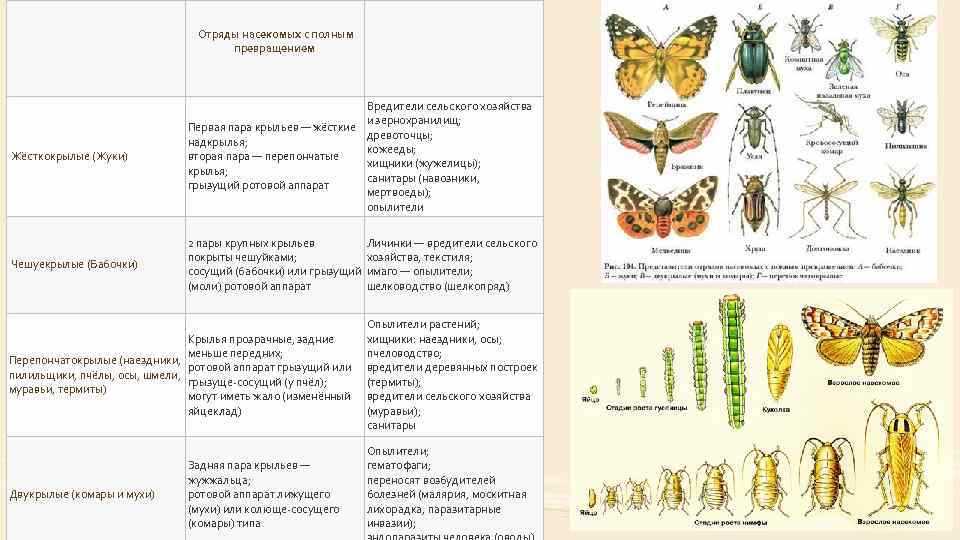
The stages of development of a butterfly, or development cycle, include not only the birth of a butterfly, but also reproduction. The life cycle of a butterfly begins with an egg, from which a hungry and small caterpillar hatches. The caterpillar goes through several stages of its development, feeding on vegetation and gradually stretching out.
However, when the caterpillar reaches its full size, it is ready to transform into a chrysalis. In this state, she experiences a metamorphosis, which results in profound changes within her body. When the chrysalis is ready, it bursts open and a beautiful butterfly flies out of it.
As soon as a butterfly is born, it is ready to breed. Male butterflies use various methods to attract the attention of females. They can release special pheromones that capture the attention of females for a considerable distance. In addition, males often show activity and energy to attract the attention of females.
When attracting attention, male butterflies can also use their bright colors and original movements. They can flutter their wings, showing their beauty and attracting the attention of females. In addition, some species of butterflies can also make sounds to attract females.
When the female shows interest in the male, they begin to interact with each other. The male transfers sperm to the female with the help of his genitals, and fertilization occurs. After that, the female lays eggs, and the butterfly development cycle begins anew.
Wedding flight: how male and female butterflies find each other

Wedding flight is an important stage in the development of a butterfly when it is looking for a mating partner. After going through the cycle of a butterfly, starting with an egg, through a caterpillar and a chrysalis, there comes a moment when the butterfly is ready to reproduce.
Male butterflies usually find females using the scents they emit. Each type of butterfly has its own unique scent that attracts females. Males can fly long distances to find a mate. They use their witty senses to detect a female in the environment and make their honeymoon flight.
When the male finds a female, they start mating. This usually happens in the air, during the flight. The male and female are connected by their abdomens and remain in this position for several minutes or even hours. During mating, the female receives the male's sperm, which she will use to fertilize her eggs.
After mating, the female butterfly begins to lay eggs. She is looking for a suitable place where the eggs will be safe and have good conditions for development. The eggs are usually laid on plants, which will be a food source for the caterpillar when they hatch. Thus, the life cycle of a butterfly is repeated again - the eggs turn into caterpillars, and then into pupae, and finally, a new butterfly is born.
Butterfly mating: the process and its duration
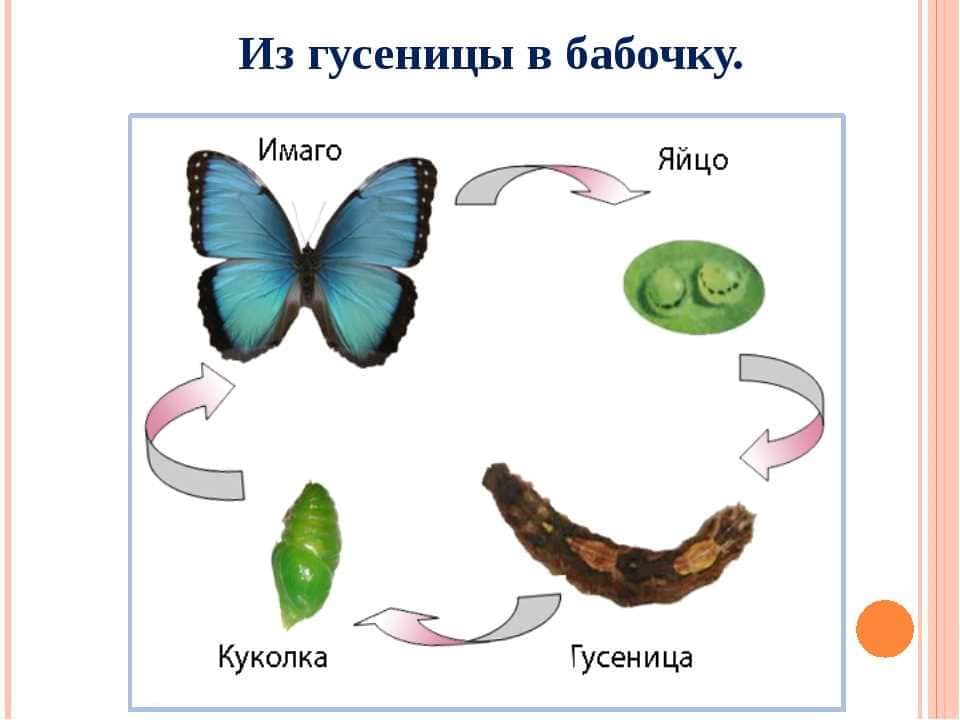
Butterfly mating is an important part of their life cycle. This process allows them to reproduce and continue their species. The birth of a butterfly begins with an egg from which a caterpillar emerges. The life cycle of a butterfly includes several stages of development, and mating occurs at the last stage.
Butterfly mating occurs during their adult life stage when they become sexually mature. This happens after the adult butterfly hatches from the chrysalis. How do butterflies reproduce? Puberty in them occurs within a few days after hatching.
The process of mating butterflies begins with the fact that the male finds a female and attaches himself to her with the help of his proboscis. He transfers the spermatophore containing the spermatozoa to the female. After that, the butterflies separate from each other. Butterfly breeding can occur several times during their short adult life, which usually lasts from a few weeks to a few months.
The duration of mating butterflies can vary depending on the species. Some species can mate in just a few minutes, while others can take several hours. After mating, the female lays eggs that will hatch into caterpillars and begin a new cycle of butterfly development. Thus, the mating of butterflies plays an important role in the conservation and reproduction of this beautiful insect.
Egg laying: where and how butterflies choose a place for future descendants
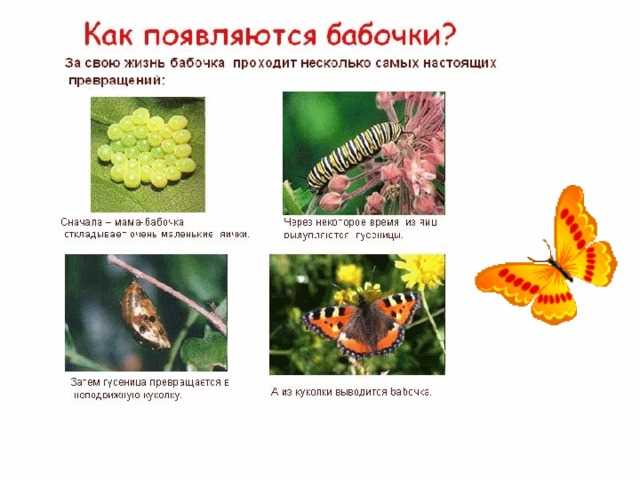
Butterfly reproduction is an amazing process that includes several stages of development. One of the key stages is the laying of eggs. Butterflies choose a place for future offspring with special care, taking into account many factors.
As soon as the mating of butterflies has taken place, the female begins to look for a suitable place to lay her eggs. She explores the environment in search of suitable conditions for the development of offspring. Often, females choose plants that are food for future caterpillars. They can lay their eggs on the leaves, stems, or flowers of plants.
Butterflies also take into account the defense mechanisms of plants to ensure the safety of their offspring. Some species of butterflies lay their eggs on plants with spines or thorns to prevent access by predators. Other species choose plants that release certain chemicals that repel enemies.
It is important to note that the choice of a place to lay eggs depends on the type of butterfly and its preferences. Some butterflies migrate long distances to find suitable breeding grounds. Others prefer to stay in a certain area and lay their eggs only on certain plants.
Thus, the process of egg laying in butterflies is complex and strategic. It provides optimal conditions for the development of offspring, taking into account not only food preferences, but also protection from predators. The life cycle of a butterfly begins with this important stage, which plays a key role in the conservation of the species and the continuation of the life cycle of butterflies.
Larval development: how does the transformation from egg to caterpillar occur?
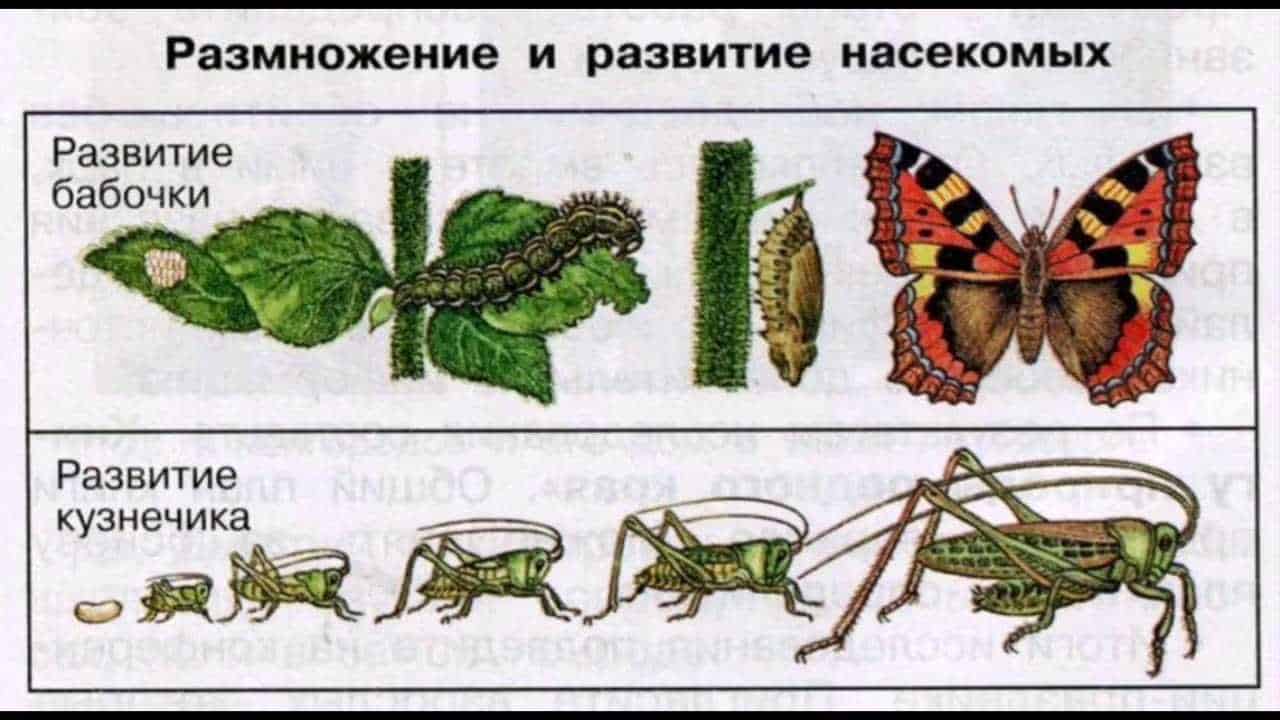
The development of butterflies occurs through several stages, starting with an egg and ending with a full-fledged butterfly. The life cycle of a butterfly consists of four main stages: egg, caterpillar, chrysalis and adult butterfly.
First, the female butterfly lays her eggs on plants that will serve as food for future caterpillars. From the eggs, small larvae emerge, which actively feed and grow. Caterpillars can go through several molts, while increasing their size.
After the last molt, the caterpillar turns into a chrysalis. It forms a protective cover, inside which complex processes of body transformation take place. Metamorphosis occurs inside the chrysalis: the caterpillar turns into a fully formed butterfly.
When the transformation process is completed, the chrysalis splits, and an adult butterfly flies out of it. The birth of a butterfly is the moment when it leaves its protective shelter for the first time. Now the butterfly is ready for life in a new guise and is able to mate.
Butterfly mating is an important stage in their reproduction. Males and females locate each other using various signals such as scents and colors. After successful mating, the female lays eggs, and the butterfly development cycle repeats again.



